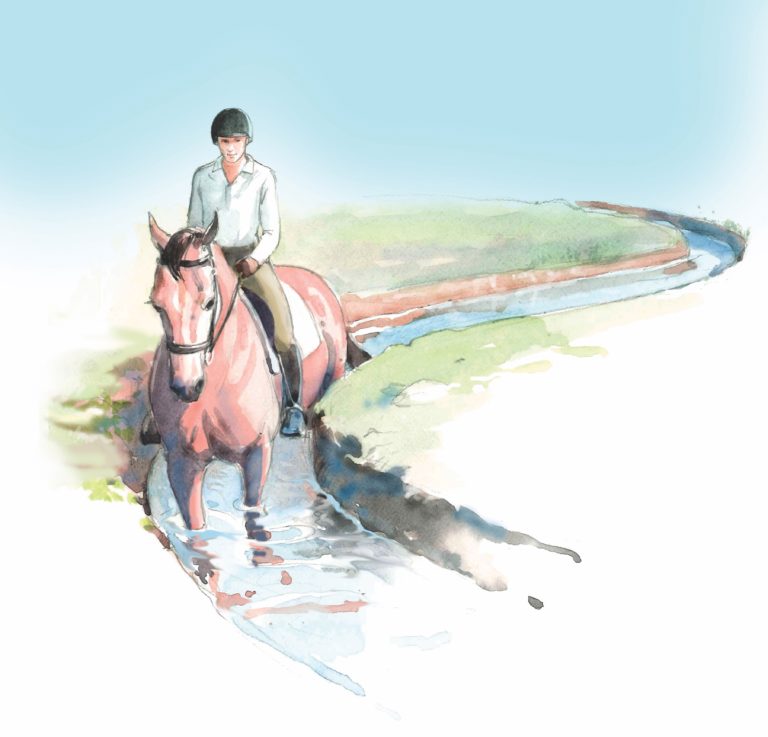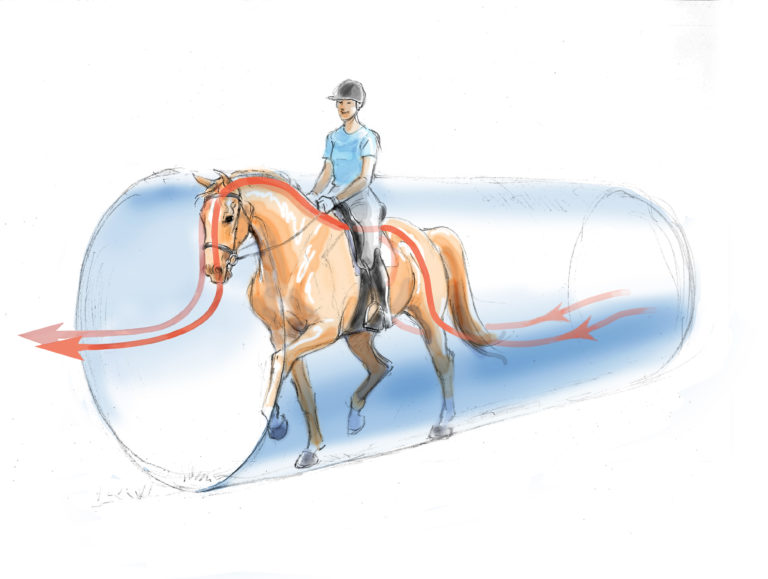This past September, German Olympian and coach of the German Equestrian Team, Monica Theodorescu, worked with eight horse-and-rider pairs at the Old Masters Series, hosted at Anke Ott Young’s Avalon Farm in North Salem, New York. Monica follows in the footsteps of her late parents—dressage master Georg Theodorescu and his wife, Inge, who rode for Germany as a show jumper—making her an obvious choice for Frank R. Henning, who developed the Old Masters Series with the goal of preserving the traditions and values of the old dressage Masters. More than 600,000 auditors have attended these events since their inception.
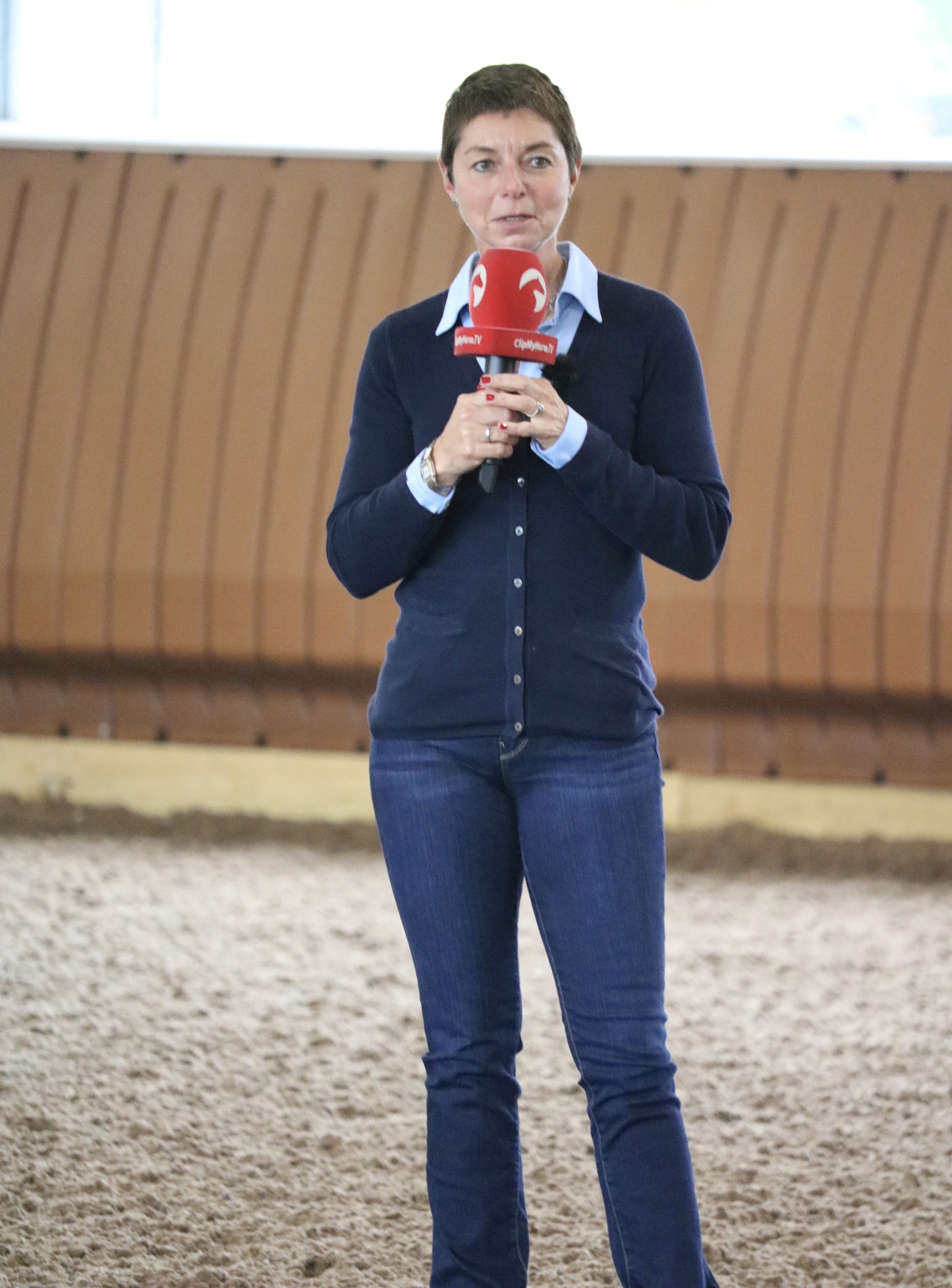
Henning addressed the group at the beginning of the clinic and conveyed the mission of his Old Masters Series: that the masters might share their wealth of knowledge gained through their lengthy riding and training careers. He said, “A good rider gets on his horse and says, ‘What can I do better?’” That was the theme—how we, as riders, can be patient and clear and trusting of the system of training that is reflected in the Training Scale.
This event was free to auditors, and proceeds gathered from the silent auction, a Bates saddle raffle and other donations went to benefit the Norma Pfriem Breast Care Center.
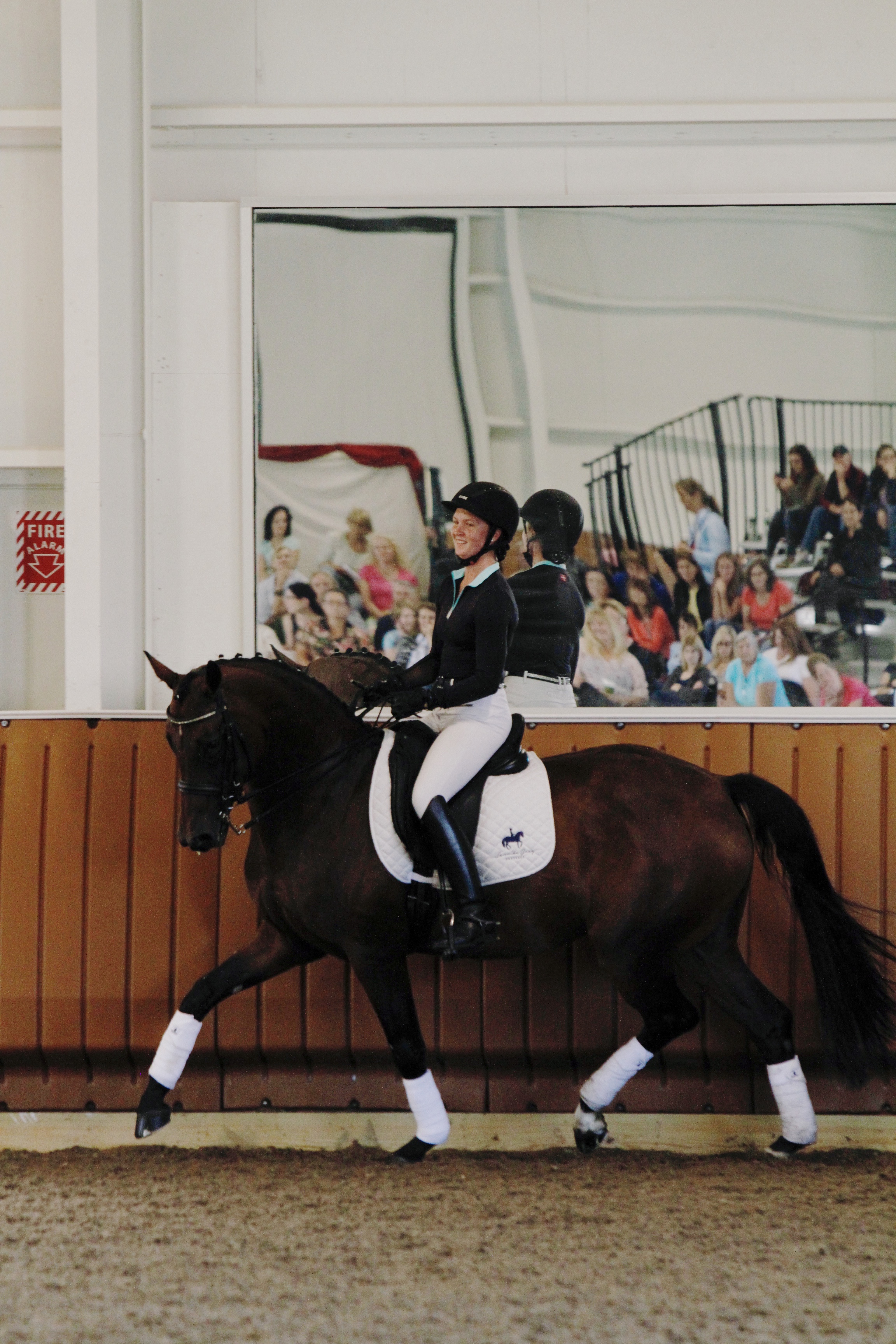
Here are 18 tips taken from Monica’s training sessions:
1. Give your horse enough time to be comfortable in new surroundings. Monica praised the first rider for walking her mare in-hand and then walking under saddle until the horse was relaxed, confident, attentive and able to do quality work.
A horse later in the program was nervous and lacking confidence in the warm-up. “Take it easy,” she said. “We have all day. Always remember that your horse must be loose and relaxed before we can go on.”
2. Always start with the easier direction to make it comfortable for your horse.
3. Ride with passive hands and work the horse from behind. One young mare challenged the contact with little pulls forward and downward and she sometimes appeared to lean on the bit. Monica encouraged the rider to keep the frame with her reins. “Don’t stretch out your arms,” she said. “Keep your elbows on your body. She has to stay to the contact. Half halts prevent her from leaning.”
To another rider on a big, slightly unbalanced horse, she said, “Give him a contact, but try not to pull him down [into a rounder frame] with your hands. If you argue with your hands, you don’t allow the hind legs to come forward. When your horse pushes well from behind, he gets rounder by himself and you don’t have to pull him down.”
4. Improve the contact with a little flexion and bend. “Don’t just flex with the hand. He must accept the inside leg too or your horse will just tilt.
“When you successfully get inner bend from your inside leg, your horse uses his inside hind leg better. Then the contact will be good as he works from behind and relaxes his back,” she said. “Push his belly to the outside and you will see his mouth gets more relaxed.”
5. Ride forward but don’t run. Your horse must be active but also relaxed. “Push to help your horse achieve more overtrack without getting faster,” she said. At the same time, the upper neck got rounder.
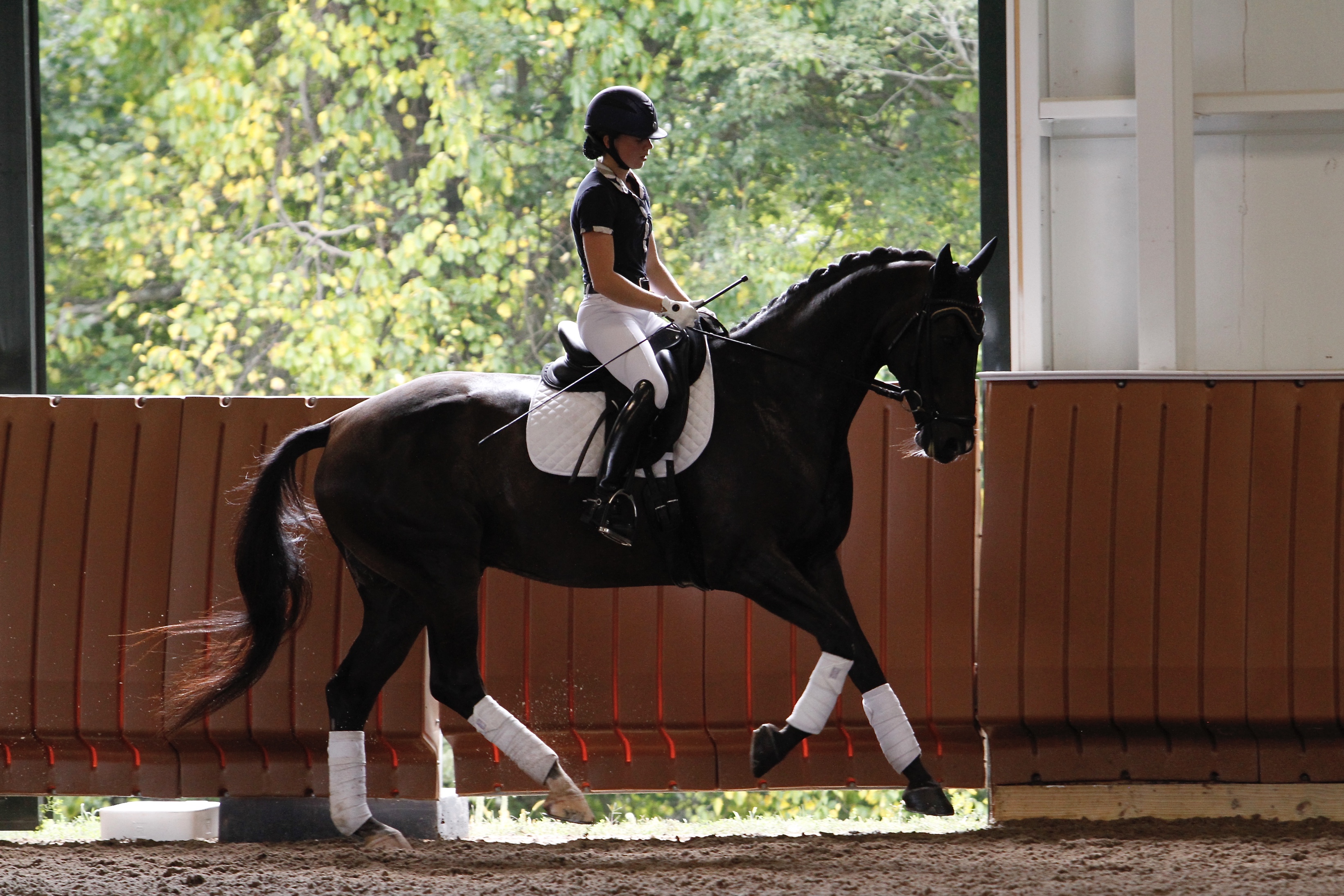
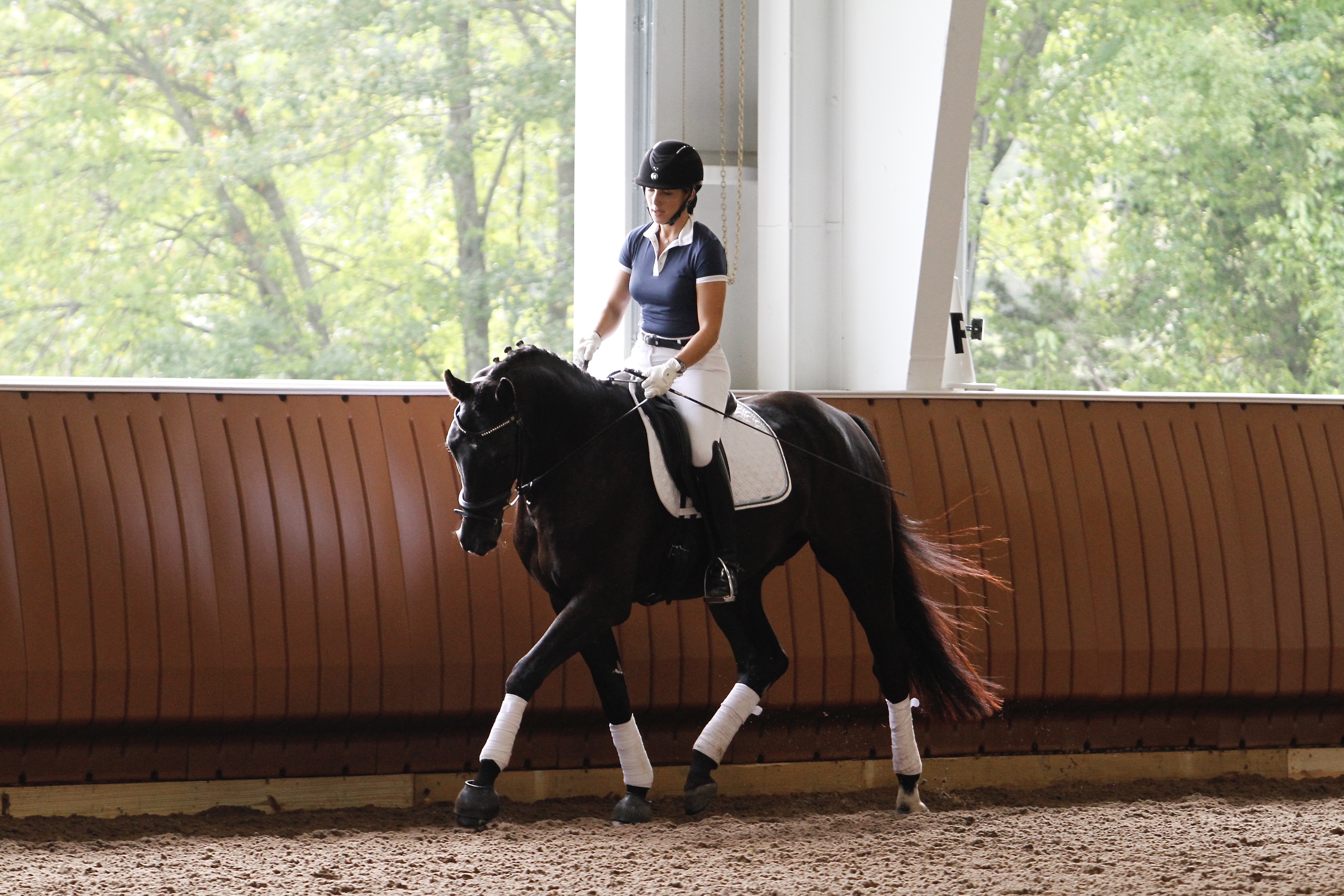
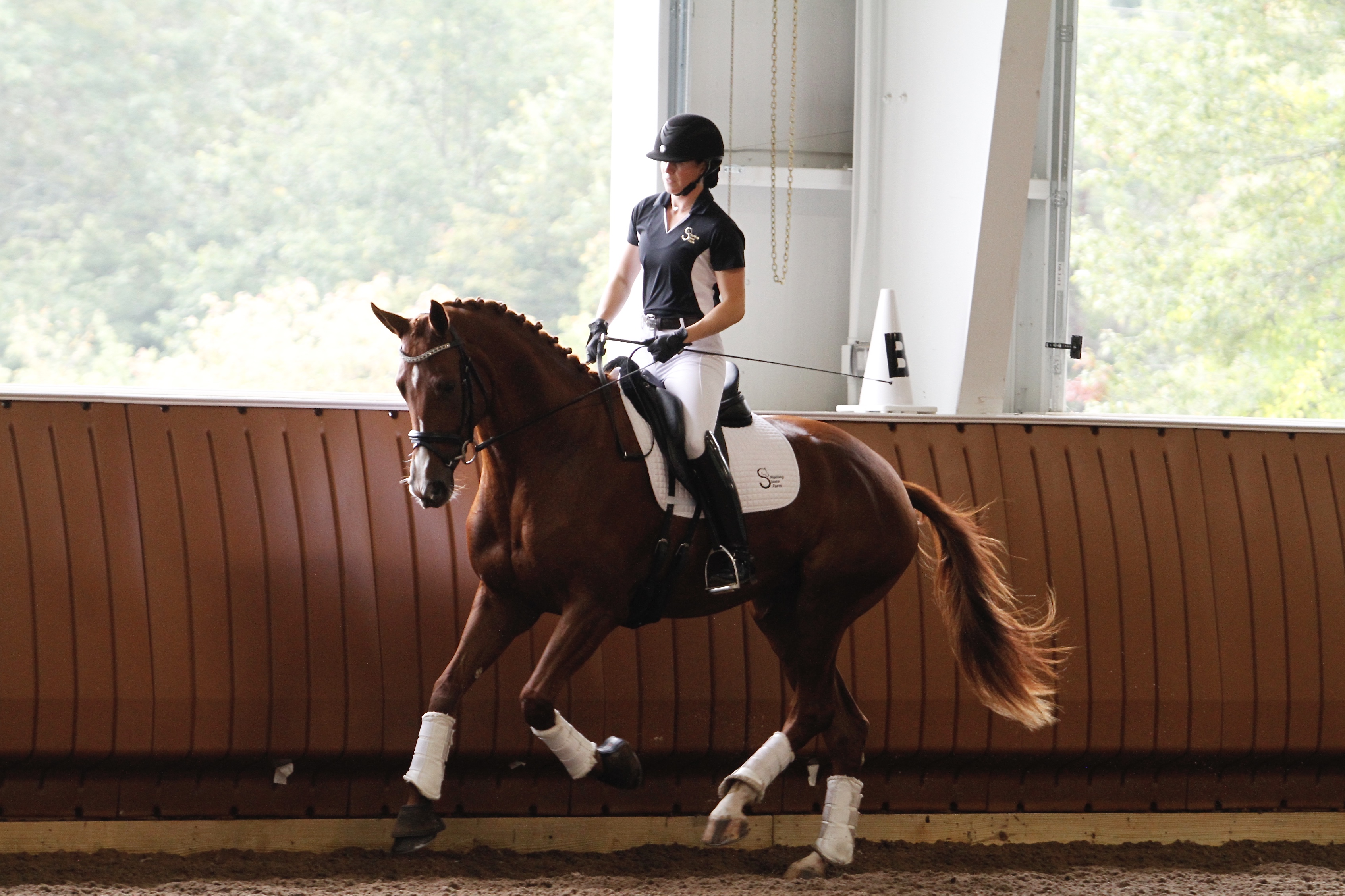
6. Ride quality transitions. “Don’t do transitions any which way,” she said. “Do good transitions with correct aids. Your horse has to listen to you and do it well because later when you do flying changes, you will need those same half halts and you will need your horse to be in front of the leg. He can’t do it on his own.”
7. Put your horse in front of the leg. “You can’t do half halts or movements—or anything—if your horse isn’t in front of you. To that end, don’t push all the time or give too many leg or spur aids. If you use the leg all the time, the horse thinks, Does she mean it or not? I don’t know. It doesn’t matter. Instead, give a little impulse with your leg and then open your legs. Take your legs away and keep them long. When your horse is in front of you, you will see the muscles in front of the withers come up, he will breathe better and work very forward.
8. Notice that when the work is good, the hocks become more flexible and, as a result, the croup goes down.
9.“Listen. You can hear the relaxed rhythm and the rhythmic breath.” Snorting is a good sign. “I always like it when a horse is snorting because it means he is relaxed and happy,” she said.
10. Give enough breaks. “Not only is it important physically,” she said, “but it’s also rewarding. Take enough time. Horses shouldn’t be rushed.”
11. Use patience and repetition. “To make something better, we must repeat it instead of pulling and kicking and insisting in the moment.”
12. Ask your horse to stretch. When a horse stretches well, it shows that the work was good. “You want to see that the tail swings,” she said. “We want to see that the horse is active behind and he reaches out in a relaxed, rhythmic way.”
13. Be consequent. In other words, from precise correct aids, your horse should give you a precise, correct response. One horse had difficulty with transitions from medium to free walk and back to medium walk. Monica encouraged the rider to practice the transition several times. “Teach her to be obedient,” she said. “Being consequent doesn’t mean being tough. It means being clear. Don’t discuss or argue the point. Instead, repeat it until your horse understands.”
14. Praise often. “When he’s good, pat him. Tell him, ‘Good boy.’”
15. Prepare. For example, when you want to half pass from the centerline, volte first so you get the bend you need for the half pass. From the correct bend, you can frame the outside shoulder and the half pass is correct and easy.
16. Every downward transition must be ridden forward with the leg. “The hind legs in every downward transition must come under,” Monica said, “and your leg aids ask the hind leg to step under and carry more weight. Be consequent in all transitions: walk–canter–walk. Shorten the canter and see that your horse takes weight behind. If he doesn’t, go forward and try again. Expect the same result in trot–halt–trot transitions and in transitions from medium canter to collected canter. Be aware of this aspect of all downward transitions.
17. When you want to collect, do it with your seat. Push the hind legs under in the downward transition so they are in a position to carry more weight. Then sit on the hind leg.
18. Überstreichen—release both reins for several strides. “This will prove whether or not your horse is in self-carriage.”

Q&A with
Monica Theodorescu
Q: Over the years, horses have changed because of better breeding. Has your management or your training changed as a result?
A: No. It’s true that we have lighter and more uphill horses than in the past, but a horse is still a horse. It has four legs, a head and a tail. There is only one way—what we call “the correct way.” German dressage Master Paul Stecken says, “There is only correct riding. That’s enough.” This works for all the horses. Our Training Scale leaves enough room for differences: that is, some horses need to be rounder or more forward or slower. Some need more or less frequent transitions, but the Training Scale is still the way for all horses.
Q: One horse had mouth issues, and the rider asked: What should I change when showing?
A: Nothing. Just keep riding. That’s just how your horse shows his stress. The more you worry about it, the more your horse will feel it, and it will add to his stress.
The Rider-and-Horse Pairs
Cara Klothe and Dhanube, a 4-year-old GOV mare
Lisa Postleb Kaptein and Bretton Beauty, a 4-year-old Hanoverian gelding
Jannike Gray and Ravanti C, an 8-year-old mare by Rubenstein
Molly Maloney and Rembrandt, a 7-year-old KWPN gelding
David Thind and Wibke, a 13-year-old Danish Warmblood mare
David Collins and Bojing, a 7-year-old Hanoverian gelding
Heather Mason and Lincoln, a 12-year-old Oldenburg gelding
Elizabeth Caron and Schroeder, a 13-year-old Hanoverian stallion
Monica Theodorescu’s star-studded dressage career included three German team gold medals from Olympic Games—Seoul in 1988, Barcelona in 1992 and Atlanta in 1996. She won team gold and individual bronze medals at the Stockholm World Championships in 1990 and she won several gold, silver and bronze medals at European Championships. In addition, she won two World Cup titles. Today she serves as coach of the German dressage team.



